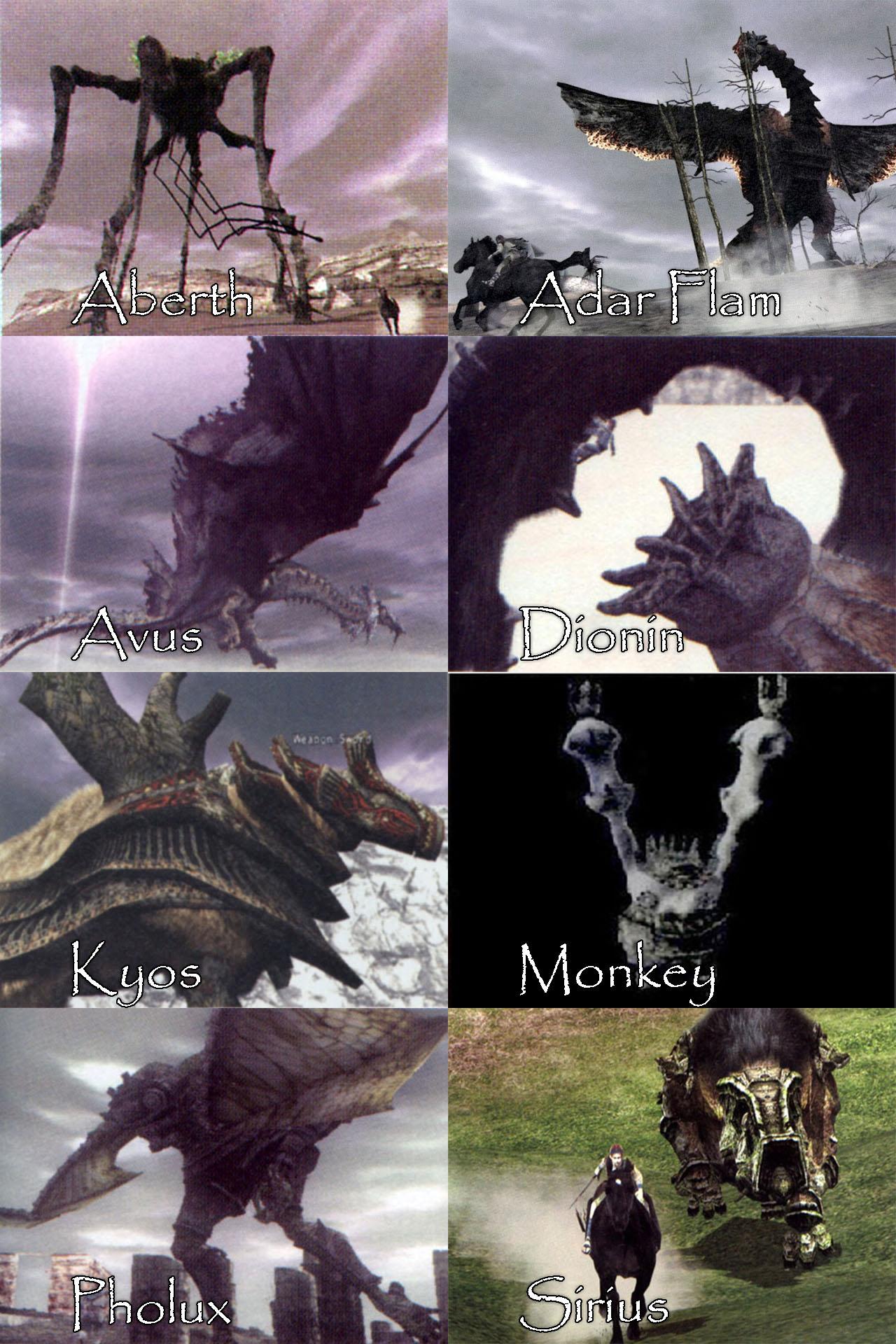
There’s no real danger once Wander’s on the “shell,” however, so the rest is a piece of cake. Leading the colossus to one of the geysers powerful enough to flip it on its back while dodging its ranged attacks puts the bond between man and horse to the test. It’s not the colossus’s movement speed that Wander needs Agro for, however, it’s the consecutive energy blasts the creature shoots from its mouth. Ironically, it closely resembles a tortoise. Without her speed, defeating the ninth colossus is nigh impossible. The sleek black mare can’t follow her rider into every colossus’s lair, but when she can, it usually means she’ll be integral to the coming battle.

Wander’s horse Agro is a near-constant companion, grounding the game emotionally despite the relative lack of dialogue. Execution and context are what make one colossus stand taller than another, so let’s see how they all stack up. They all generally run a similar course: find a way onto the colossus, seek out its magic sigil(s), and stab away. No two boss fights are created equal, and Shadow of the Colossus is no exception (though Kow Otani’s transcendent, guilt-inducing soundtrack picks up much of the slack). It’s a bold design choice on the developers’ part, but it works extremely well for both the story and the game itself… most of the time. In order to do that, he must defeat the sixteen colossi that represent said idols, upon which the latter will collapse. Indeed, Dormin-a being that communicates through two intertwined, disembodied voices-is eerily happy to inform protagonist Wander that in order to resurrect Mono-the dead girl he brought with him to the Forbidden Lands-he must destroy the sixteen idols in the Shrine of Worship. Spoilers Ahead RELATED: The Ending of 'Shadow of the Colossus,' Explained The bosses aren’t merely a means to shake things up or test your grit, they’re the whole point of the game. That’s where Shadow of the Colossus is different. No matter the game, however, bosses generally serve as points of transition and change, breaks from regular gameplay that challenge your knowledge of the mechanics. Still others, like the Boom Box boss microgame from WarioWare: Smooth Moves, are just dumb fun. Others, like The Last of Us’ David, are story-driven, climactic encounters that change the characters forevermore. Some, like Dark Souls’ Asylum Demon, are introductory, planting the seeds of what’s to come. Overlook them if you can, and if you can’t, there’s no one who’d fault you for feeling frustrated when dealing with them.Boss fights come in almost as many varieties as video games themselves do. And while anyone new to Shadow of the Colossus will see them as blemishes on an otherwise perfect game, they will feel like familiar obstacles for those of us who struggled and overcame them over a decade ago on our first tour of duty. These control scheme faux pas are what some critics will hold against the game, I’m sure.
#ALL COLOSSI PS2#
These relics of the PS2 era are annoyances now that we’ve all become accustomed to intelligent AI and pixel-perfect collision detection, and yet they help the game retain its original personality. Agro still sometimes stumbles over hills or fails to listen to you in the heat of battle, the camera can still be the biggest enemy you ever have to fight, and Wander will ragdoll when tossed from a colossus. That means it plays, more or less, like you remember. Interestingly, though, while the game was built from the ground up for the PS4, the vast majority of the physics engine was carried over from the original. You’ve killed a colossus and, in some ways, have become the monster yourself. The game’s soundtrack that before was vibrant, chaotic and exhilarating in the heat of battle will now become somber and regal, an aria to the once-gentle giant.

Once you’ve found them, you’ll repeatedly stab the colossus until it collapses in a lifeless heap in front of you. This part of the battle is almost always the scariest for the player, as one misstep, or one blow from a colossus can – and often does – kill the player.Īfter you make your way onto the colossus, you’ll look for glowing glyphs that signify weak spots, usually located where vital organs are on the stomach, head or neck. It will vary from colossus to colossus, and the way forward is not always the most apparent. Other times you’ll have to wait patiently in one spot as the colossus attacks you head-on. Sometimes this involves dodging an attack and climbing on its hand, sword or face. From here you’ll have to find a way to climb aboard its rocky hide.


 0 kommentar(er)
0 kommentar(er)
